Hajanthy Jeyapragasam, Ajani Ilukkumbura, Punu Jayakody and Prof. Thashi Chang
Falls and elderly
Elders are prone to falls due to the wide range of changes in normal anatomy and physiology during old age. Falls among elderly imposes a huge economic burden on the family, community and the society and is a major cause for morbidity, dependence, premature death, emergency admissions and hospitalizations among the elderly.
Although falls are multi-factorial, there are four main categories of risk factors namely biological, behavioural, environmental and socioeconomic factors (Figure 1).
Most of them are modifiable which gives us the opportunity to prevent falls.
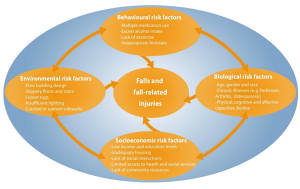
Figure 1. Risk factor model for falls in elders: WHO Global report on falls prevention in older age (World Health Organization, 2007).
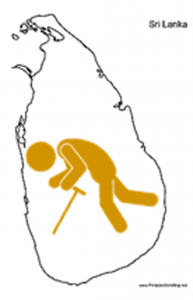
Falls in Sri Lanka
Just as the global population, the Sri Lankan population is
also rapidly aging. Therefore, falls among the elderly, which is identified as a global health problem by the World Health Organization, is likely to emerge as a significant public health problem in Sri Lanka.
Studies regarding falls among the elderly in Sri Lanka are scarce. Hence, we aimed to study the prevalence, severity, associated factors and the risk for falls among selected community-dwelling elders in Sri Lanka.
Our study on falls
We conducted a community-based cross-sectional descriptive study that included 128 participants who were aged 65 years or older living in the Anderson housing complex located in Colombo 05. We interviewed them and assessed their risk of falling in the next year using the QuickScreen (QS) clinical fall risk assessment score. Standard tools such as the Montreal Cognitive Assessment score (MoCA) and modified Rankin Scale (mRS) were also used. We recorded each participant’s weight, height, vision, hearing, tactile sensitivity and assessed their mobility (strength, reaction-time and balance) using tests referred to as the near tandem stand test, alternate step test and sit to stand test. (Figure 1).
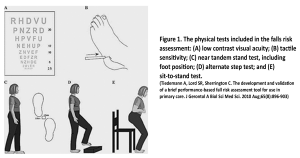
What we found….
Almost half of the study population (44%) had experienced a fall within the past five years with a large proportion having fallen more than once. Sixty-three percent of those who fell sustained serious consequences such as fractures, internal bleeding, dislocation and severe pain which required some form of medical treatment.
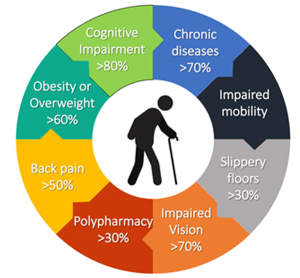
Figure 2. Prevalence of risk factors among the elderly in our study population.
The prevalence of risk factors among the elders in our study is shown in figure 2.
We found a significant impairment in strength, reaction-time and balance among the participants. Almost 1/4th to 2/3rd of the population failed the mobility tests mentioned above. With regards to environmental factors that caused these falls, the most common risk factor was found to be slippery floors.
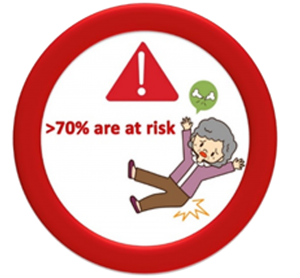
The tests that we did to assess their risk of falls also showed alarming results with almost 3/4th of the population being at a significant risk of falling.
Our message….
It is clear that falls are common among elders and they result in significant morbidity. Majority of the elders in our population are at a risk of falling. However, many of the common risk factors that were found such as diabetes, hypertension, back pain, obesity, vision impairment, mobility impairment, slippery floors and polypharmacy are factors that can be modified with active intervention. Therefore, public health measures through educational programmes to these elderly groups and their families are essential to reduce the burden of falls and their associated problems.
